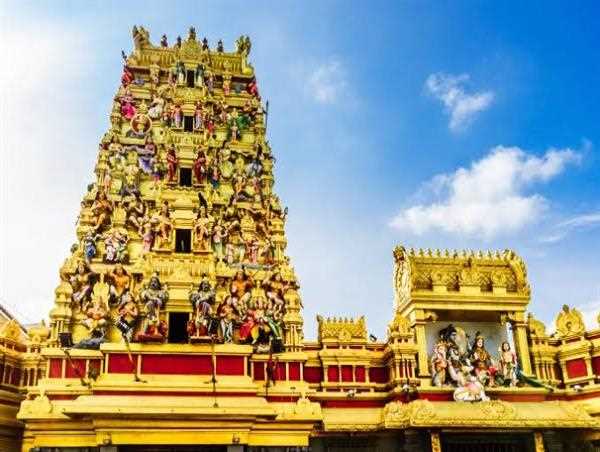Indian temples are renowned for their unique architecture, intricate carvings, and spiritual significance. The temples of India have been built over centuries, and each temple has its own unique features that reflect the culture and traditions of the region. One such feature of Indian temples that resembles the pylons of the Egyptian temples is the Gopuram.

The Gopuram is a towering gateway that serves as the main entrance to a temple complex. It is a prominent feature of the South Indian temple architecture and is usually made of stone or brick. The Gopuram is adorned with intricate carvings of gods, goddesses, and mythical creatures that depict stories from Hindu mythology.
The Gopuram resembles the pylons of the Egyptian temples in many ways. The pylons of the Egyptian temples were monumental gateways that were built to impress and awe the visitors. They were usually constructed in pairs, and the entrance was through a central gateway. The pylons were decorated with intricate carvings and reliefs depicting the pharaohs, gods, and goddesses.
Similarly, the Gopuram of Indian temples is also a monumental gateway that is built to impress and awe the visitors. It is usually constructed in a stepped pyramidal shape and has multiple tiers or levels. The entrance to the temple complex is through the central gateway, which is usually the largest and the most ornate.
The Gopuram is also decorated with intricate carvings of gods, goddesses, and mythical creatures that depict stories from Hindu mythology. The carvings on the Gopuram are similar to the reliefs on the pylons of the Egyptian temples. Both the Gopuram and the pylons serve as an architectural symbol of the spiritual significance of the temple.
Another similarity between the Gopuram and the pylons is their symbolic significance. The Gopuram represents the transition from the secular world to the spiritual world. It is believed that by passing through the Gopuram, the devotee leaves behind the material world and enters the world of spirituality. Similarly, the pylons of the Egyptian temples represented the transition from the mortal world to the afterlife.